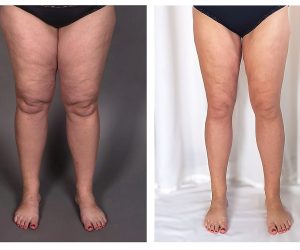Are you finding it hard to remain productive and focused during the day? The problem might not be your work ethic or your workload but rather your office lighting. The right lighting can make all the difference in your productivity, mood, and energy levels. In this blog post, we will guide you through the process of setting up the perfect office lighting to help you stay focused, energized, and productive throughout the day.
Main Lighting Setup For Your Office
Use Natural Light
Natural light can be a great benefit to your office lighting setup. You should try to have natural light in front of or beside your work surfaces and computer screens to avoid glare and maximize outdoor views. If direct sunlight creates too much glare during certain times of the day, try solar shades to soften the light without compromising your view. You can also position your workstation facing north or south to avoid shadows at any point in the day. Consider using a simple blind or standing screen to diffuse the sunlight shining through a window and provide a comfortable working environment.
Use Task Lights
For tasks that require focus, such as working on a computer or paperwork, it’s important to have a clear and defined light source that can be adjusted to your needs. An adjustable desk lamp or articulated lamp can be useful in directing light exactly where you need it. If your home office has multiple workstations, consider setting up dedicated task lighting for each station, such as a desk lamp for computer and phone work, a separate lighting setup for a filing area, and another for a table used for reviewing photos and layouts.
Add A Decorative Lighting
In addition to ambient and task lighting, you may want to consider adding decorative and accent lighting to enhance the visual appeal of your home office. Accent lighting, such as picture lights, can draw attention to specific elements in the room, while decorative lights, like wall sconces, can provide a direct visual appeal.
Avoid Glare And Shadows
When setting up your office lighting, be mindful of where the light is coming from. Avoid having a light source behind you while working on the computer, as it can cause glare on your monitor. Also, watch out for unintended shadows cast by task lighting. Consider the location of windows as well when arranging your workspace. For instance, if you write with your right hand, your hand and arm may cast shadows if the task light is also placed on the right.
Find Balance With Brightness
When it comes to office ceiling light fixtures, it’s important to find a balance between brightness and harshness. Dim lighting can cause eyestrain, headaches, and fatigue, while overly bright lighting can cause glare and disrupt circadian rhythms. It’s generally best to use overhead lighting of medium brightness, preferably LED-based and possibly daylight-mimicking, supplemented with task lights, desk lamps with light therapy capabilities, and accent lighting. Ideally, workers should have control over the brightness of their personal work area.
Use A Suitable Color Temperature
Research has shown that the type of lighting used in an office setting can have a significant impact on employees’ productivity, mood, and energy levels. Choosing the right lighting is crucial to creating an optimal work environment that enhances creativity, focus, and overall well-being.
Blue or cool-toned lights are ideal for brainstorming settings or rooms with active staff. According to a two-month study conducted by the University of Greenwich, workers who were exposed to “blue-enriched light bulbs” felt happier, more alert, and experienced less eye strain. Additionally, a 2009 study by the University of British Columbia found that blue lighting can enhance creativity, making it a great option for environments that require cognitive tasks requiring creativity or attention to detail. Cool-toned lights have also been shown to support mental acuity, vitality, and alertness while reducing fatigue and daytime sleepiness.
On the other hand, warm lighting, such as orange, yellow, or warmer tones, has the opposite effect and is better suited for break areas in the office. Warm lighting creates comfort and trust, increases sleepiness, and improves relaxation.
Neutral lighting is best for conference rooms and productivity areas in the office. It doesn’t have the dramatic effects of warm and cool lighting, but it does enhance cooperation and productivity.
Overall, finding a balance between lighting that promotes productivity and lighting that enhances relaxation is key. It’s important to consider the type of work being done in each area of the office and choose lighting that suits the needs of that particular space. By doing so, you can create an ideal work environment that promotes a healthy work-life balance, reduces eye strain and fatigue, and boosts overall productivity.
Choose The Type Of Light
Three types of lighting fixtures include direct, indirect, and bidirectional. Direct fixtures target 90 to 100 percent of the light down onto your workstation. Indirect overhead lights aim most of the light upward, allowing it to bounce off the ceiling before it reaches your work surface. Bidirectional fixtures shine light both upward and downward, in equal proportions, bouncing the light off the ceiling and other surfaces like walls before casting it onto your desk area.
Use LED Bulbs That Mimic Natural Light
While it’s difficult to incorporate natural lighting into every area of an office building, artificial sources of office lighting can be used. Well-designed LED bulbs can mimic daylight, but light therapy or Smart lighting can take the daylight replication concept further. In particular, light therapy lamps can be a Smart solution that is portable, compact, and can be placed anywhere in the office. Although, desk placement is generally the best position for light therapy lamps for executives and office workers. As they work, the light emitted mimics natural daylight, resetting circadian rhythms, regulating hormone function, increasing energy levels, and thereby boosting productivity.
Avoid Fluorescent Lights
Fluorescent lights should be avoided as they can be harsh on the eyes and can cause flickering. This flickering can lead to eye strain, blurred vision, and headaches and should be avoided whenever possible. Instead, consider using alternative lighting options, such as natural light or LED lighting, which can be gentler on the eyes and provide a more comfortable work environment. In addition to lighting, it is important to take regular breaks, practice good posture, and maintain a comfortable working distance from the computer monitor to prevent eye strain and other related issues. By making these small changes, you can help protect your eyes and prevent discomfort and fatigue during long periods of work.
Conclusion
The right office lighting can make all the difference in your productivity, mood, and energy levels. By incorporating natural light, task lights, decorative lighting, and avoiding glare and shadows, you can create a comfortable and conducive work environment. Additionally, choosing the right color, temperature, and type of light, such as LED bulbs that mimic natural light and avoiding fluorescent lights, can help prevent eye strain and other related issues. By making these small changes, you can help protect your eyes, reduce fatigue, and boost overall productivity.



